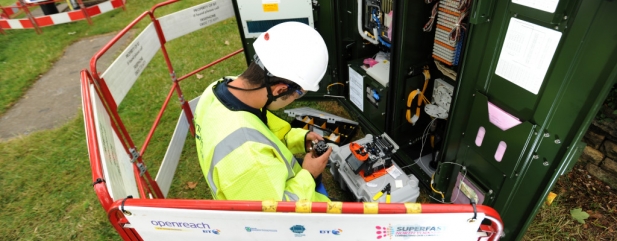Archived article
Please note that tax, investment, pension and ISA rules can change and the information and any views contained in this article may now be inaccurate.
BT in charm offensive to get investors back onside

BT (BT.A) has launched a charm offensive to convince analysts and investors that it can successfully navigate the many financial and regulatory challenges it is facing.
Last month the £20.5bn telco put dividend growth on hold. Income is one of the major reasons why shareholders own the stock.
In recent years BT’s dividend growth has been running at double-digits, with the average annual payout increase between 2013 and 2017 (year end to 31 March) working out at close to 13%.
Now the payout is set to freeze for the foreseeable future at 15.4p a year. That implies an forward income yield of close on 7.5% a year at the current 206.5p share price.
BT hopes this will provide the financial leeway so that the group can emerge a leaner, more agile business better suited to the needs of the digital future. Importantly, it also anticipates that it will help get regulator Ofcom onside over Openreach investment.
Openreach is BT’s national telecoms infrastructure backbone that it, and third party suppliers, expect to use to provide faster broadband speeds across the UK.
In a question and answer session BT’s chief finance officer (CFO) Simon Lowth was apparently resolute that a cut to future dividends would not be necessary to clinch a ‘fair bet’ settlement with the telecoms watchdog.
‘BT is adamant that a dividend cut won’t be necessary,’ is what researchers at investment bank Jefferies came away telling clients.
Analysts at Numis Securities were similarly reassured, with the brokerage’s John Karidis saying he believed that BT’s dividend per share ‘is very safe’.
Balancing the requirements of shareholders, the regulator and pension trustees remains BT’s biggest challenge. The UK Government wants ‘full fibre’ rollout across mainland Britain by 2020, meaning that 95% of UK properties can access internet connection speeds of 24Mbps, with the rest guaranteed minimum 10Mbps.
BT’s Lowth spelled out guidance for 3m fibre-to-the-premises (FTTP) connections by 2020 as the ‘first phase’. Beyond that the group is targeting an extra 1m connections per year, a build rate that analysts largely agree is testing but ‘feasible’.
‘There is now confidence that deployment beyond 3m premises can deliver acceptable returns as a commercial investment,’ say Jefferies analysts.
Analysts now seem largely optimistic and hopeful regarding the BT investment story, with 20 of the 22 that research the stock either advising investment clients to ‘buy’ or ‘hold’ the shares. Only two remain firmly rooted in the sceptics’ camp with ‘sell’ recommendations. (SF)
Important information:
These articles are provided by Shares magazine which is published by AJ Bell Media, a part of AJ Bell. Shares is not written by AJ Bell.
Shares is provided for your general information and use and is not a personal recommendation to invest. It is not intended to be relied upon by you in making or not making any investment decisions. The investments referred to in these articles will not be suitable for all investors. If in doubt please seek appropriate independent financial advice.
Investors acting on the information in these articles do so at their own risk and AJ Bell Media and its staff do not accept liability for losses suffered by investors as a result of their investment decisions.
Issue contents
Big News
- BT in charm offensive to get investors back onside
- Markets are climbing the ‘wall of worry’
- Battle for control at Stobart and Petropavlovsk
- What does the Government sale of RBS stake mean for investors?
- Why Hotel Chocolat continues to be a sweet investment
- Bodycote boom time raises the fear of inevitable bust
 magazine
magazine









